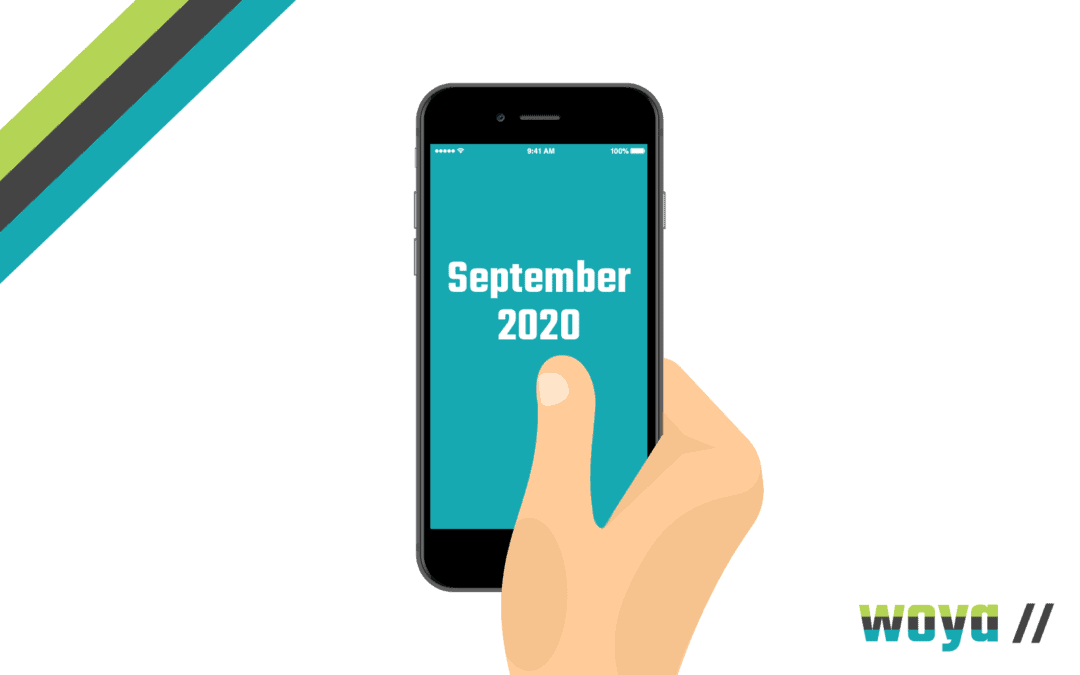
September 2020 – Mobile Friendly Website Cut-Off Date
Reading Time: 3 minutesIt’s news to no one: the world, and the world wide web, is mobile. More of us than ever have global information at our fingertips and in our back pockets in the form of smartphones and internet-connected tablets. It should be a given that websites are enabled to operate on mobile devices and smaller screens seamlessly – yet there are still businesses out there without having optimised their web content to a mobile friendly website. Their days however, are numbered … courtesy of Google.
Google have announced that from September 2020, they will start moving to mobile-first indexing for all websites that appear in their search results. They estimate that 70% of the websites in Google listings are already mobile friendly and won’t be negatively affected: but the 30% remainder will be.
What is Mobile-First Indexing?
Put simply: mobile friendly websites will be featured at the top of search results, and those that aren’t will be ranked at the bottom.
Mobile-first indexing is the practice of ranking websites in search results based on their mobile friendly features. If a website is designed to automatically format properly no matter the device size or type, and includes like-for-like content (including text, videos, images, links, titles, descriptions and meta tags), it will be ranked higher in search results than those not formatted to be accessed on different devices.
Why is Google Doing This?
More users than ever are accessing the internet through their portable devices, so optimising search results to feature more inclusive results first simply helps Google deliver a better experience to those using their site. Mobile-first indexing will provide a better customer service overall: keeping search results useful, readable and simple.
What Does Mobile-First Indexing Mean for your Website’s SERPs?
If your business website is mobile-friendly, mobile-friendly indexing will have a positive impact on your SEO (search engine optimisation). However, if your business website isn’t mobile-friendly, it will be negatively impacted and demoted down the results.
SEO is a key marketing activity for businesses to enable visibility online against their competitors, and without careful management of SEO, it can be difficult for companies to be found on the internet. If there’s any chance that your business’ website could be ranked down as a result of these changes, action should be taken immediately to avoid this.
How To Avoid Being Ranked Down on Google
First off, if you’re not sure whether or not your website is mobile friendly, check online to confirm.
If it looks as though you do need to take action to re-format your website, make it a priority amongst your internal marketing and IT objectives. Although the indexing won’t begin until September, any changes to your website should be made as early as possible.
Dependent on how your website was created and is managed on an ongoing basis, it may be that re-formatting it to include mobile optimisation is a simple task. If not, web designers will be able to make a fresh ‘copy’ of your existing site that is able to adapt to the device its being viewed from and may even be able to enhance the overall user experience of the site. This doesn’t mean creating a separate website to your existing, but rather recreating it in a better, more accessible format.
If your website does need to be re-formatted, there are mobile-friendly guidelines set by Google that lay out their requirements for an optimised mobile website. Web design professionals will be able to follow these guidelines to ensure that your new web offering fits and will be prioritised within search results.
Whilst not a standalone story in marketing terms, having a mobile-friendly website will contribute to marketing communications – individuals can be encouraged to carry out website actions ‘on the go’ or to download apps, dependent on requirements. If your business’ website has been unformatted for mobile purposes until now, subtly demonstrating to your audience that it has been revamped may be beneficial.
Will Other SEO Measures Remain Important?
Yes! While Mobile-First Indexing is part of how websites are ordered on Google search results, it’s not the be all and end all. Other factors such as domain authority, trusted links, easy-to-read and navigate pages and relevant content will all continue to play a part in search engine ranking. SEO should remain a priority for businesses of all shapes and sizes.
As SEO experts, Woya has the tools, the skills and the ability to improve your SEO rankings with our established search engine marketing techniques. We understand the art of supporting websites to rank higher in Google for keywords relevant to your business and potential client searches. Find out how your website is performing with our FREE online SEO Site Audit Report

